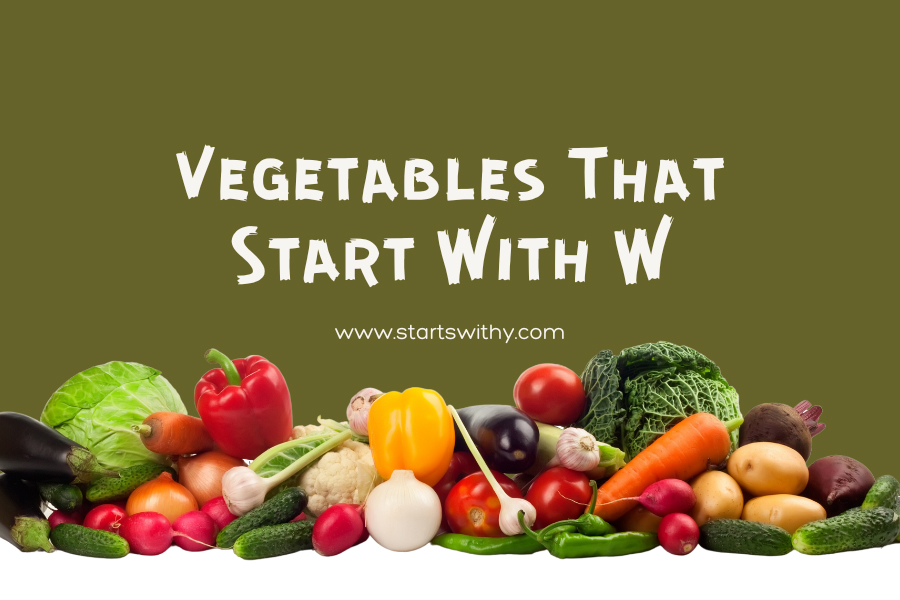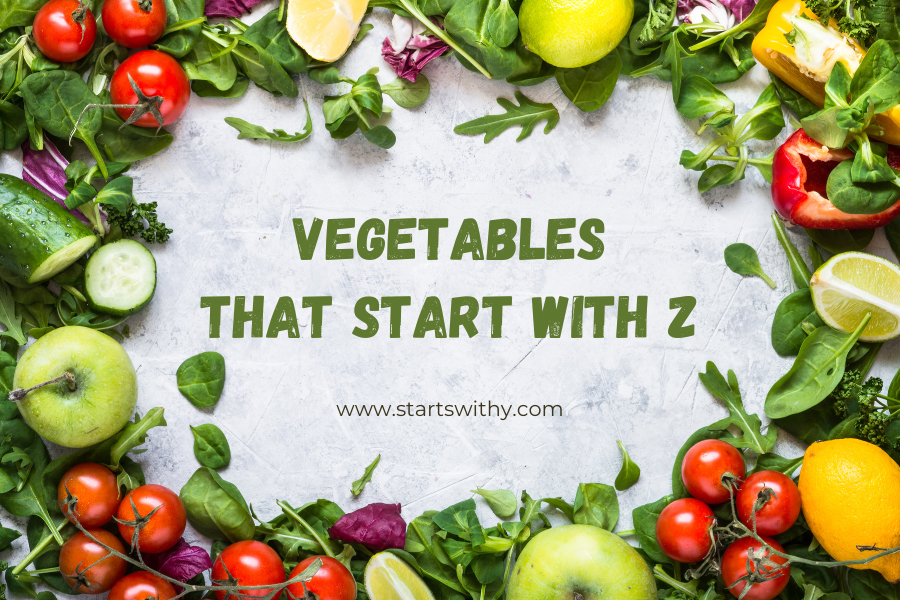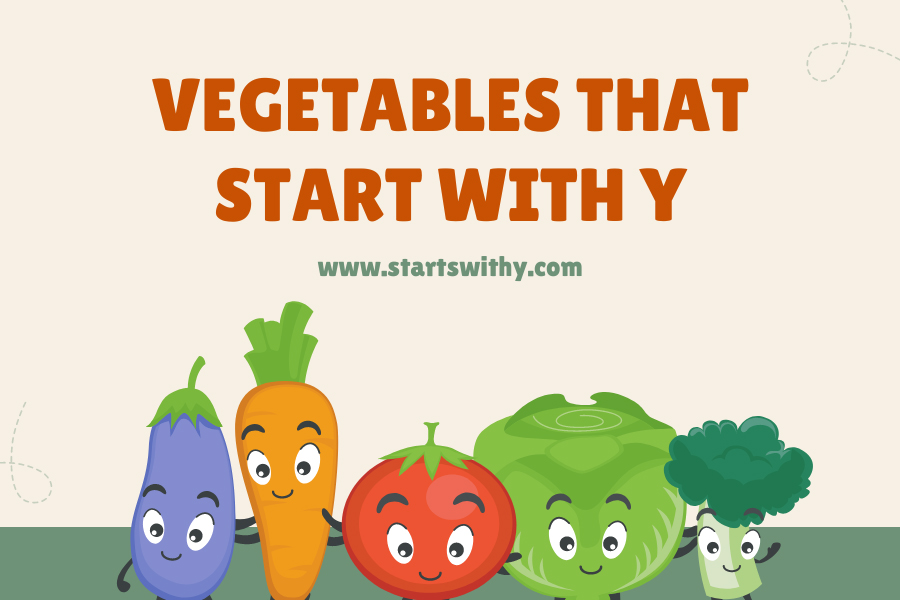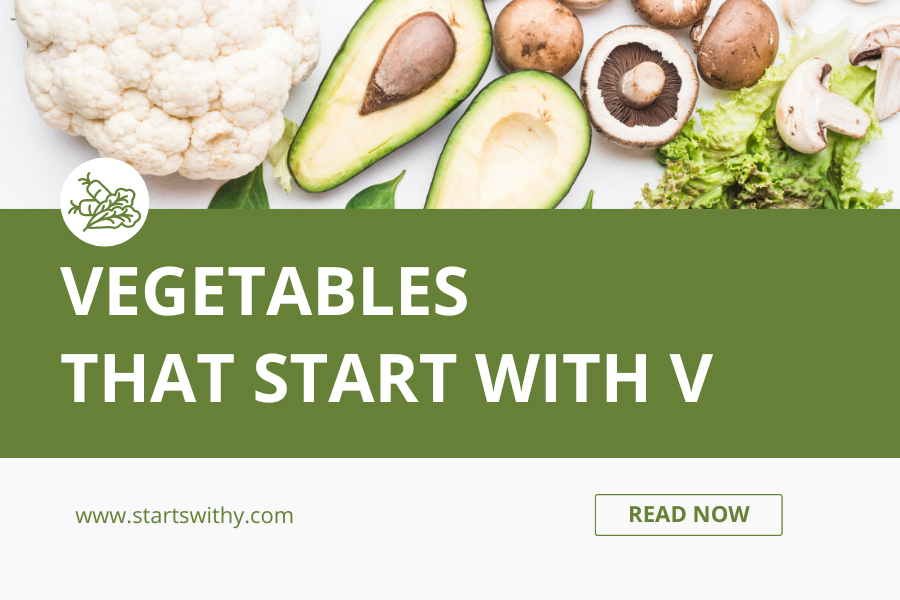The vast spectrum of the vegetable kingdom is nothing short of wondrous, with each letter in the alphabet introducing us to a unique chapter of flavors, histories, and health benefits. As we weave our way to the letter ‘W’, we’re welcomed into a select, yet special segment of this verdant realm. While the ‘W’ compartment might not be as crowded as some others, it boasts vegetables that are both whimsical in their nomenclature and wholesome in their nutritional profiles.
This article will whisk readers through the world of ‘W’ vegetables, highlighting their culinary applications, inherent health properties, and fascinating backstories. Whether you’re a culinary wizard, a wellness warrior, or simply someone with a voracious appetite for knowledge, prepare to be wooed by the world of vegetables that wear the wonderful badge of the letter “W”.
Vegetables That Start With The Letter W
The world of vegetables is vast and varied, presenting a rainbow of colors, flavors, and textures. As we journey through this world, we arrive at the letter “W”, which brings with it a unique array of vegetables. These might not be the first veggies you think of when planning your meals, but they are definitely worth a closer look. They possess not just culinary significance but are also packed with nutritional goodness. Let’s delve deeper into these wholesome wonders and discover what they have to offer.
1. Watercress (Nasturtium officinale)
Overview: A perennial plant, watercress is an aquatic or semi-aquatic leafy green that thrives in cool streams and springs.
Flavor & Texture: It has a peppery taste, somewhat similar to arugula, with a crisp texture.
Nutritional Value: Watercress is a nutrient-dense food loaded with vitamins A, C, and K, and also contains potent antioxidants.
Culinary Uses: Often added to salads, sandwiches, and soups. It can also be blended into pestos or sauces for a peppery kick.
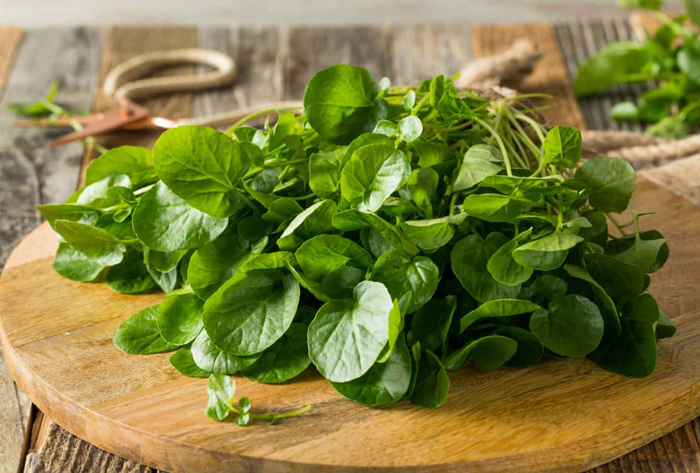
2. Wax Bean
Overview: A variation of the green bean, wax beans, as the name suggests, are usually yellow in color.
Flavor & Texture: They have a mild, sweet flavor with a crunchy texture when fresh.
Nutritional Value: Wax beans are a source of dietary fiber, vitamin C, and folic acid.
Culinary Uses: Can be steamed, boiled, stir-fried, or pickled. They are also a popular ingredient in summer salads.
3. White Radish (Raphanus sativus var. longipinnatus)
Overview: Also known as daikon, this is a mild-flavored winter radish usually characterized by fast-growing leaves and a long, white root.
Flavor & Texture: Milder than the small red radishes, it has a slightly sweet taste with a crunchy texture.
Nutritional Value: Rich in vitamin C, potassium, and antioxidants.
Culinary Uses: Commonly used in Asian cuisines in salads, stir-fries, or pickled preparations.
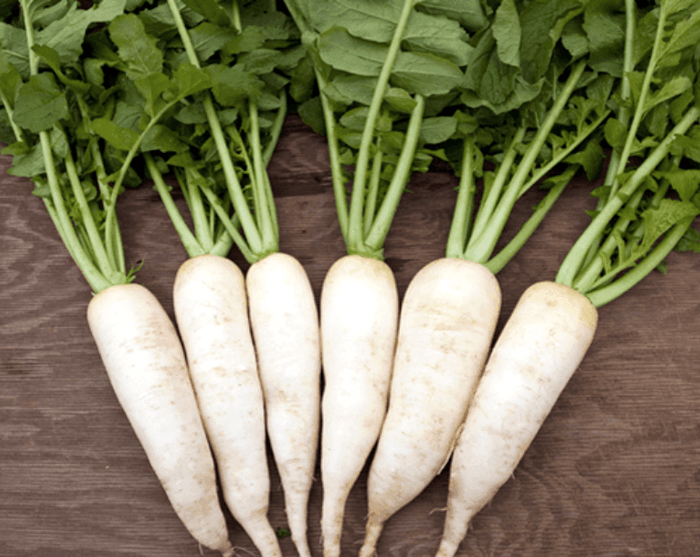
4. Wild Leek (Allium tricoccum)
Overview: Also known as ramps, wild leeks are native to North America and are considered a spring delicacy.
Flavor & Texture: They have a strong garlic-onion flavor, with tender leaves and a bulbous base.
Nutritional Value: Wild leeks are a good source of vitamins A and C and provide essential minerals like iron.
Culinary Uses: Can be eaten raw, grilled, sautéed, or pickled. They are often used as a base in soups, pasta, or egg dishes.
5. Winter Melon (Benincasa hispida)
Overview: Despite its name, winter melon is a gourd and not a melon. It gets its name due to its long shelf life, allowing it to be stored and consumed during winter.
Flavor & Texture: Mild in flavor, it has a firm texture when raw that turns soft when cooked.
Nutritional Value: A good source of vitamin C, vitamin B, and essential minerals.
Culinary Uses: Often used in soups and stews, especially in Asian cuisines.
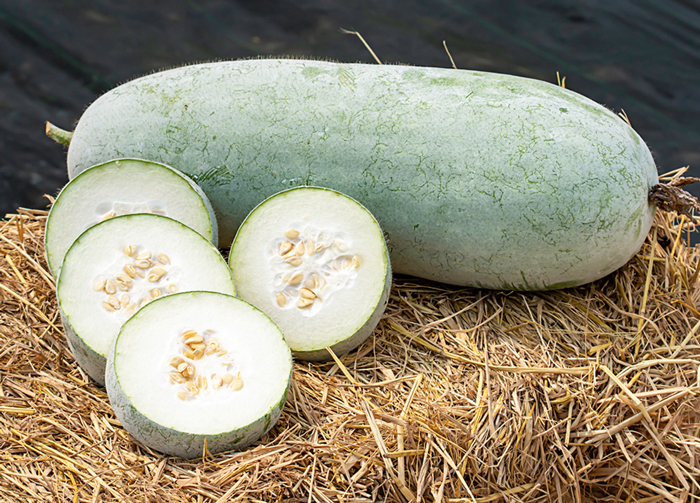
6. Water Spinach (Ipomoea aquatica)
Overview: A semi-aquatic tropical plant grown primarily for its tender shoots and leaves.
Flavor & Texture: The taste is similar to spinach but slightly milder, with a crunchy stem.
Nutritional Value: It is rich in vitamins A and C, iron, and calcium.
Culinary Uses: Widely used in Southeast Asian dishes, it can be stir-fried, sautéed, or added to soups.
7. Water Chestnut (Eleocharis dulcis)
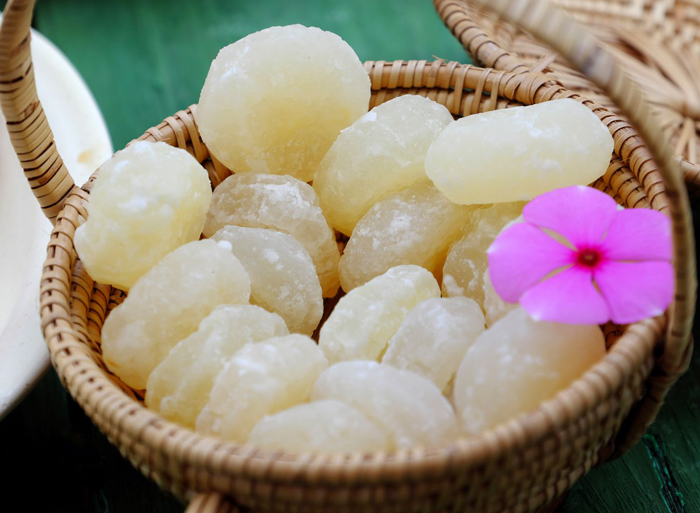
Overview: An aquatic plant, the term “water chestnut” refers to its small, round corms, which are edible.
Flavor & Texture: It has a sweet, nutty taste and is famous for its crispy, juicy texture.
Nutritional Value: A good source of potassium, fiber, and antioxidants.
Culinary Uses: Often used in Asian cooking, it can be eaten raw, boiled, grilled, or added to stir-fries and dumpling fillings.
8. Wasabi
Wasabi, that fiery green paste that awakens your senses with a single swipe, is more than just a condiment. This Japanese root vegetable, with its distinctive pungent aroma and sinus-clearing heat, is a cultural icon. But did you know that only the stem and root of the Wasabi plant, related to horseradish, are used? The rest is simply too fibrous!
Growing up to 40 cm tall, Wasabi thrives in cool, shaded mountain streams. Cultivating it is a delicate art, and its short shelf life makes it a precious ingredient. Real Wasabi, grated from the fresh root, is a luxury, costing up to ten times more than its dyed horseradish imitator. But that first, fiery bite is truly an experience for all ages!
9. Water Caltrop
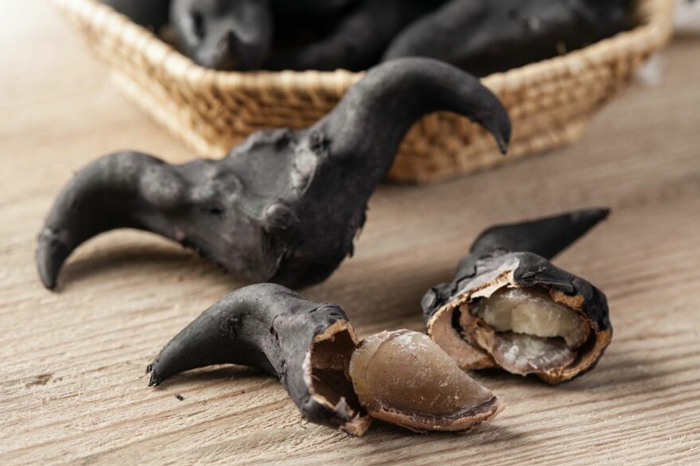
Imagine a fruit that looks like a spiky medieval mace, grows underwater, and tastes like a nutty mix of sweet potato and chestnut. That’s the Water Caltrop, a fascinating aquatic plant found in tropical and subtropical regions. Though its prickly exterior might seem intimidating, inside lies a delicious white flesh packed with nutrients.
Water Caltrops have been a dietary staple for centuries, particularly in Southeast Asia. The young shoots and fruits are eaten raw, cooked, or dried and ground into flour. Roasted or boiled, they offer a unique flavor and a delightful crunch. But be careful! Those sharp spines can be quite the prickle. So, when foraging for these underwater treasures, remember to handle them with gloves.
10. Welsh Onion
Move over, boring green onions! Welsh Onions, also known as scallions, are here to add a vibrant punch to your meals. These slender, hollow green stalks, milder than their bulb-forming cousins, are bursting with flavor and versatility. From adding a delicate oniony zing to salads and stir-fries to garnishing soups and stews, Welsh Onions are a kitchen must-have.
Packed with vitamins C and K, as well as dietary fiber, Welsh Onions are a nutritional powerhouse. And the best part? They’re incredibly easy to grow! Start a pot of Welsh Onions on your windowsill, and you’ll have a constant supply of fresh, flavorful greens at your fingertips. So, let your little chefs snip away and discover the magic of this culinary chameleon.
11. Wheatgrass
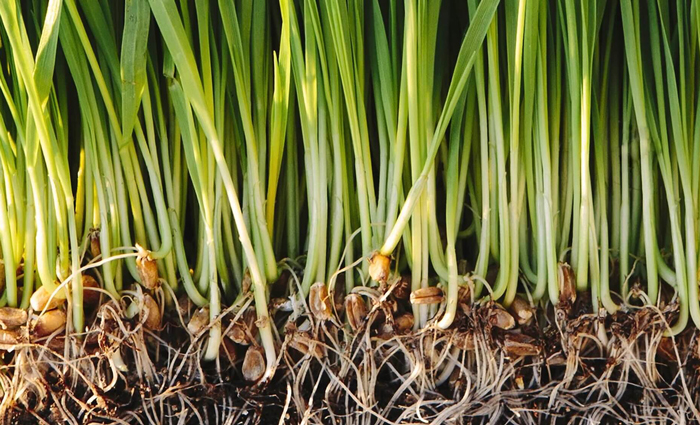
Forget about superpowers from spinach – Wheatgrass might just be the real superhero of the plant world. This slender, green grass, packed with vitamins, minerals, and antioxidants, is touted as a natural detoxifier, energy booster, and even an anti-inflammatory wonder. In fact, one ounce of Wheatgrass is said to contain the nutritional equivalent of six pounds of vegetables!
While traditionally juiced or powdered, Wheatgrass can be enjoyed in various ways. Sprinkle some on your smoothie bowl, mix it into your salad dressing, or even blend it into pancakes for a vibrant green surprise. Just remember, like any new food, start slow and listen to your body. With its potent nutrient punch, a little Wheatgrass can go a long way!
12. White Asparagus
Imagine asparagus, not in its familiar green coat, but dressed in pristine white. That’s the magic of White Asparagus, a delicacy grown under cover, shielded from sunlight. This results in tender, sweet stalks with a buttery texture and a slightly nutty flavor. It’s like discovering a secret garden of asparagus, waiting to be savored.
White Asparagus is a seasonal treat, typically available in spring, and comes in various thicknesses. Thicker spears are perfect for grilling or roasting, while thinner ones are ideal for salads or crudités. Be warned, though, this vegetable comes with a price tag, often much higher than its green counterpart. But for a special occasion or a truly unique culinary experience, White Asparagus is an indulgence worth trying.
13. Wild Celery
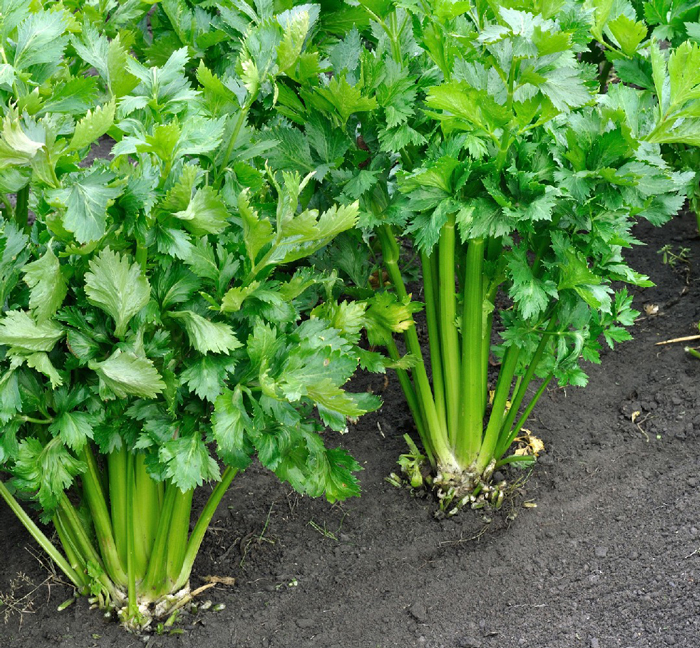
Forget store-bought celery! For a taste of adventure, let’s head to the marshes and meadows to meet Wild Celery. This aquatic relative of the familiar supermarket staple thrives in wet areas, offering its crisp stalks and aromatic leaves to those willing to seek them out.
Wild Celery has a stronger, earthier flavor than its cultivated cousin, making it a perfect addition to soups, stews, and hearty dishes. But be cautious, foragers! Not all wild plants are edible, and Wild Celery has poisonous lookalikes. Make sure you’re confident in your identification before taking a bite.
14. Wild Garlic
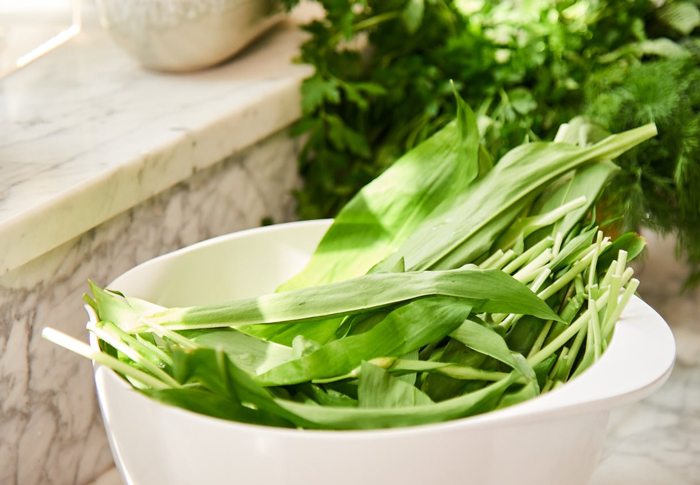
Forget store-bought pesto! Wild Garlic, also known as ramsons, offers a taste of the wilderness right in your backyard (or local forest). This pungent, garlicky herb bursts with flavor and nutrients, boasting 10 times more vitamin C than its cultivated cousin. But be warned, its potent aroma might just wake up the bears!
Growing in damp woodlands and meadows, Wild Garlic thrives in spring. Its flat, green leaves and white star-shaped flowers are a sure sign of warmer weather. But remember, foraging requires caution. Wild Garlic has lookalikes, so proper identification is crucial. Once safely gathered, use this delightful herb to jazz up your omelets, soups, and even pesto. Just a few leaves can transform any dish into a vibrant, garlicky masterpiece.
15. Winged Beans
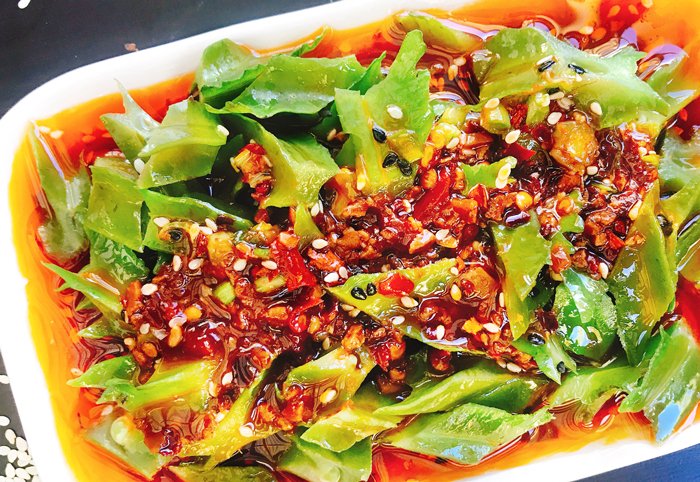
Move over, green beans! Winged Beans, with their unique four-winged pods, are ready to take flight in your kitchen. Native to Southeast Asia, this versatile vegetable offers a nutritional powerhouse in every bite. Rich in protein, fiber, and essential vitamins, Winged Beans can be eaten raw, cooked, or dried.
The young pods, with their crisp texture and slightly sweet flavor, are perfect for stir-fries and salads. The mature beans inside can be boiled, roasted, or sprouted – adding a nutty, meaty dimension to any dish. But the real stars are the wings! These tender, leafy appendages taste similar to spinach and can be enjoyed raw or cooked. So, ditch the boring beans and embrace the wings – Winged Beans are sure to make your meals soar!
16. Winter Squash
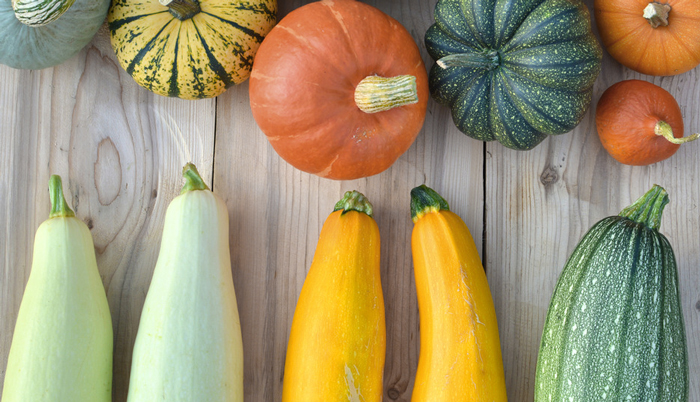
As autumn paints the leaves with fiery hues, Winter Squash emerges from the earth, a vibrant symbol of the season’s bounty. This diverse family of gourds, boasting over 400 varieties, offers a spectrum of flavors and textures to tantalize your taste buds. From the sweet and nutty Butternut Squash to the earthy and robust Spaghetti Squash, there’s a Winter Squash for every palate.
Packed with vitamins A, C, and potassium, Winter Squash is a nutritional powerhouse. But beyond its impressive health benefits, it’s a culinary chameleon. Roast slices for a satisfying side dish, puree it into creamy soups, or turn it into spiralized “noodles” for a healthy pasta alternative. With its endless versatility and vibrant flavors, Winter Squash is a true gem of the fall harvest.
List of Vegetables Starting with W
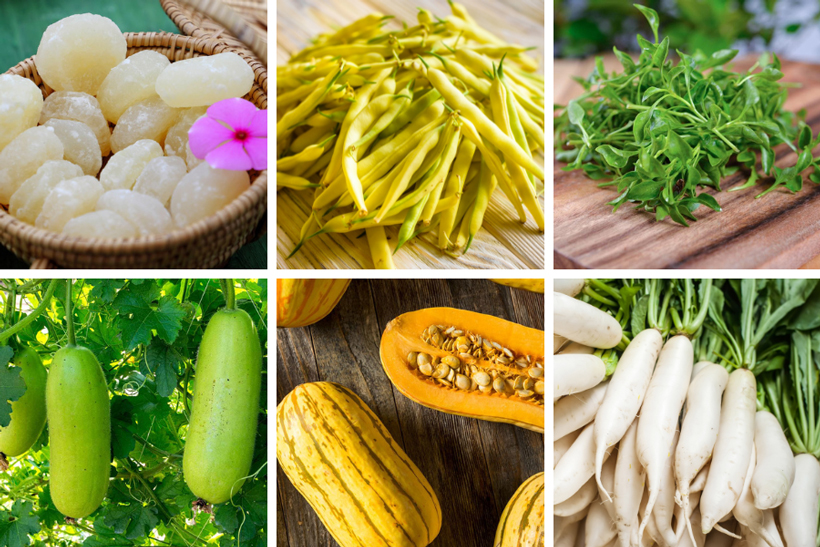
| Wasabi | Water Caltrop | Water Chestnut |
| Water Melon | Water Spinach | Waterblommetjie |
| Watercress | Wax Beans | Welsh Onion |
| West Indian Gherkin | Wheatgrass | White Asparagus |
| White Radish | Wild Celery | Wild Garlic |
| Wild Leek | Winged Bean | Winter Melon |
| Winter Squash | Witloof | Wombok |
| Won Bok |
Conclusion
The letter “W” brings to the table an array of vegetables that are as varied in their culinary applications as they are in their nutritional benefits. From the peppery punch of watercress to the subtle sweetness of winter melon, these vegetables showcase the breadth and depth of flavors in the plant kingdom. They remind us of the vast tapestry of nature, where even lesser-known vegetables can star in our plates and palates. Next time you’re in search of a culinary adventure, venture into the world of “W” vegetables, and you might just find a new favorite!
Vegetables That Start With
A | B | C | D | E | F | G | H | I | J | K | L | M | N | O | P | R | S | T | U | V | W | Y | Z
